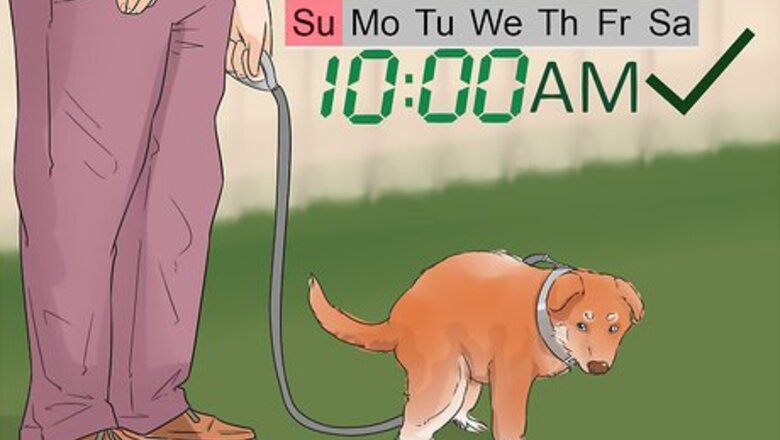
views
Supervising Your Dog
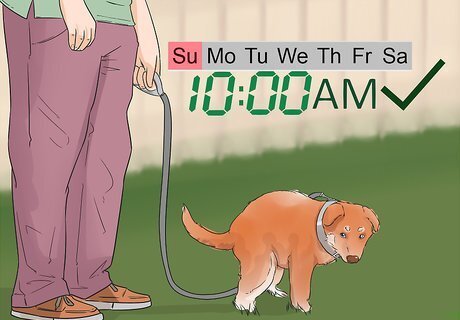
Set aside some time. In order for this process to work—especially for it to work in 1 week—someone must be home with your dog all day and night. Closely supervising your dog is the most efficient and effective way to housetrain it. Try to take some time off work, and/or work together with another household member to tag-team supervision. A dog 3-6 months old will respond best to this method of week long conditioning. An older dog may need more than 7 days to embrace the new schedule and adjust to housetraining.
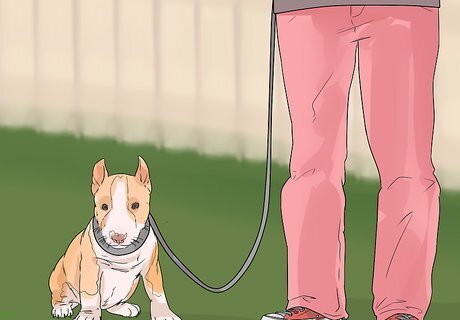
Tether your dog. Once again, you are going to need to watch your dog closely during this process. Anytime you are not playing with or feeding your dog, consider tethering it close to you. Your dog’s freedom at home is an honor that has to be earned by it reliably controlling its potty behaviors. In general, a 4-6 foot long leash will work for this purpose. Attach a leash to your belt. Attach a leash to something nearby, where you can see your dog the whole time.
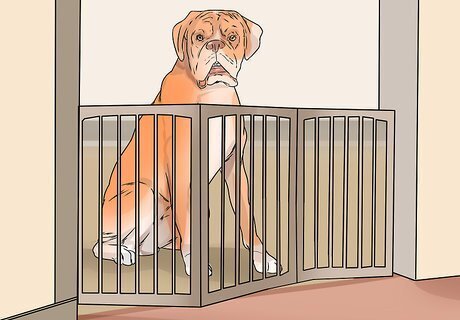
Confine your dog. If you must walk away (or if tethering is not an option for you), consider confining your dog to a kitchen or bathroom. To reiterate, you must closely supervise your dog all day long in order for this process to work. Crate training is another option. Choose a crate that is large enough for your dog to turn around while inside, and lie down in. Avoid leaving your dog alone and confined for long periods of time. Three hours should be the absolute max.
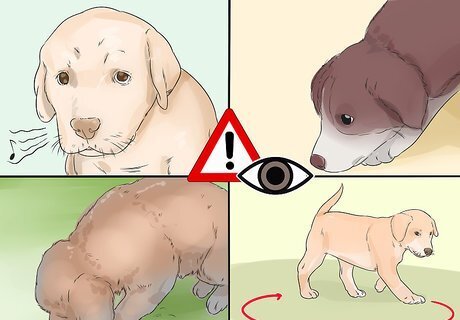
Watch for signs. You are watching your dog for 2 reasons: to prevent accidents in the house, and to learn to recognize your dog’s “bathroom signs.” You must recognize when it needs to go outside and take it promptly. You may also begin to notice a pattern for when it needs to go. Use your notebook to keep track of your dog's patterns and signs. Look for behaviors like: Whining Sniffing the ground Scratching or pawing the ground Walking around in a circle
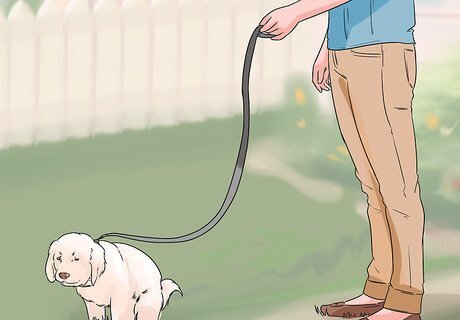
Take your dog out. Anytime you see your dog exhibiting "potty" signs, stop what you're doing and take the dog out. Bring it to the same location each time and allow some time for it to go. When it successfully goes potty in the correct spot, provide a treat, praise, and affection. Take note of what time of day and/or what was happening (e.g., dog just ate) when it needed to go out.
Creating a Routine
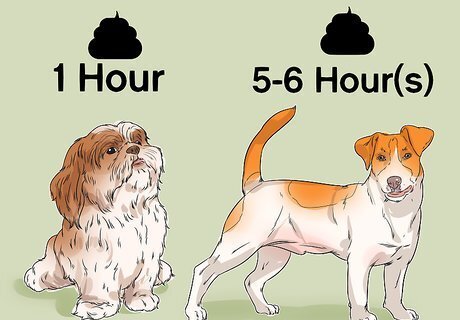
Learn how often your dog should “go.” Although this can vary by breed and individual dog, as a general rule of thumb, a puppy can wait 1 hour to go potty for each month it has been alive. However, puppies may not have the self-control to wait that long and should be taken out every 20-30 minutes. Set an alarm on your phone to remind you to take the puppy out this often when training it so you can avoid accidents. Most adult dogs can wait up to 5 or 6 hours. Smaller dogs and toy breeds may need to eliminate more frequently.
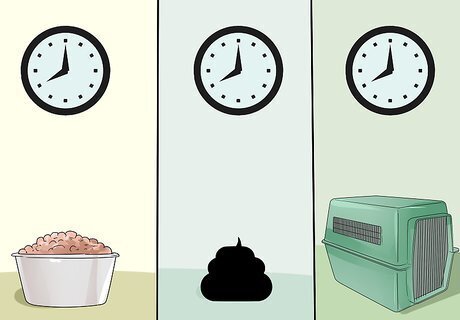
Determine a schedule. In order to housetrain your dog, you need to get your dog on a consistent schedule. Dogs are pack animals. They like to be given clear boundaries and thrive on routine. Determine times for eating, bathroom, and play. Aim for bathroom breaks every 20 to 30 minutes for puppies. Take older dogs out at least every 3 hours. Provide food and water 30 minutes before a scheduled bathroom break. After each potty break, spend 30 minutes playing, followed by about 2 hours of crate, tethering, or confinement.
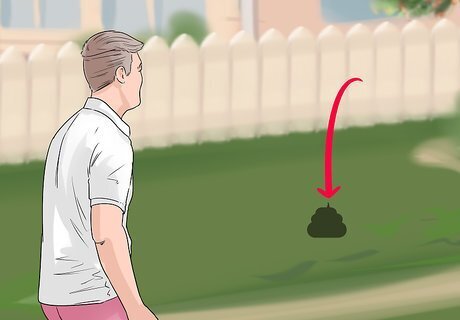
Choose a “bathroom spot.” You can make your bathroom trips more efficient by selecting a consistent location for your dog to go potty. Always go to the same spot in your yard for bathroom trips and keep the dog on a leash. Stay with the dog so you are there to praise it for eliminating. Don’t simply let the dog out and expect it to go. This communicates that you and your dog are outside for a “bathroom trip” and not “playtime” or a walk. After the dog goes and you praise it, let it off the leash.
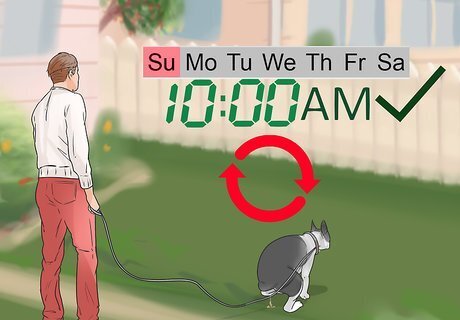
Be consistent! You are in charge of determining the schedule. You can workout a routine that feels right for you’re your dog. The most important thing is for you to be consistent! Pick a schedule that you can stick to. Follow the routine as closely possible. Don’t skimp on the playtime. Your dog needs this!
Rewarding Your Dog for Good Behavior
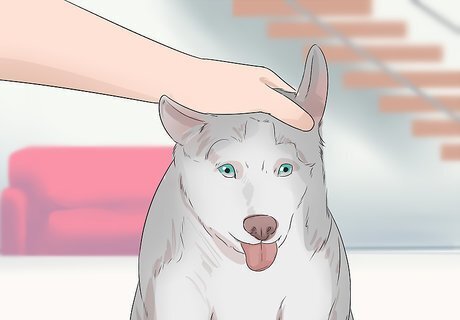
Praise your dog. When your dog goes potty in the bathroom spot, you can also reward your dog with praise! Scratch its head, speak kind words, and let it know that you are happy.
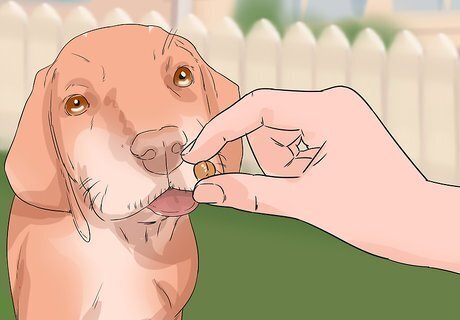
Provide treats. Whenever your dog does potty in the right spot, you should reward it! One way to do this is to provide a dog treat. It is important to give the treat right away so your dog associates the treat with the action, so consider keeping a treat in your pocket.
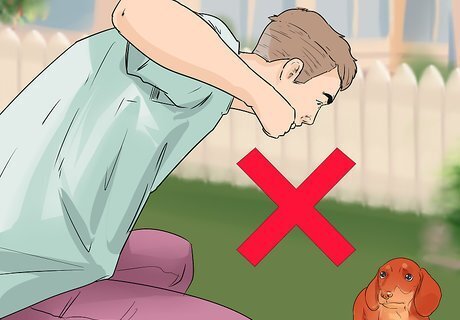
Avoid punishment. Accidents are probably going to happen. However, yelling, spanking, or rubbing your dog’s nose in it is not the best practice. This creates a negative association with going to the bathroom that you want to avoid. When you catch your dog in the act: Interrupt without yelling. You may express a firm “Oops!” Don’t use an angry tone. Immediately take it to the designated toilet spot. If it goes potty in the designated spot, provide praise and a treat.
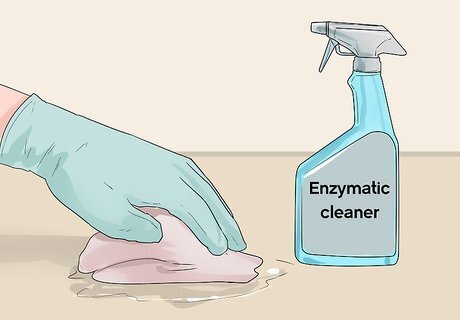
Clean any accidents right away. Use an enzymatic cleaner to clean up any accidents. Look for one specifically formulated for pet stains and odors. This prevents your dog from going potty in these spots again. Look for such cleaners at pet stores or online. One good brand is Nature’s Miracle.














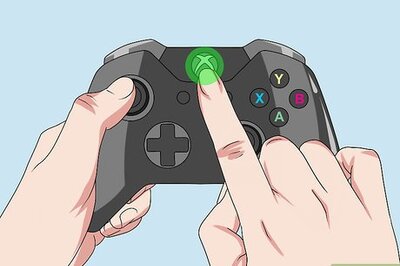
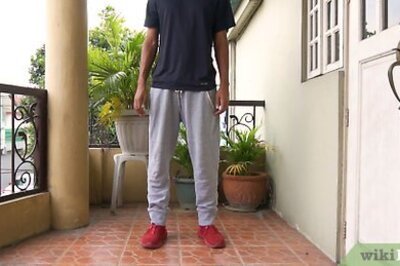


Comments
0 comment